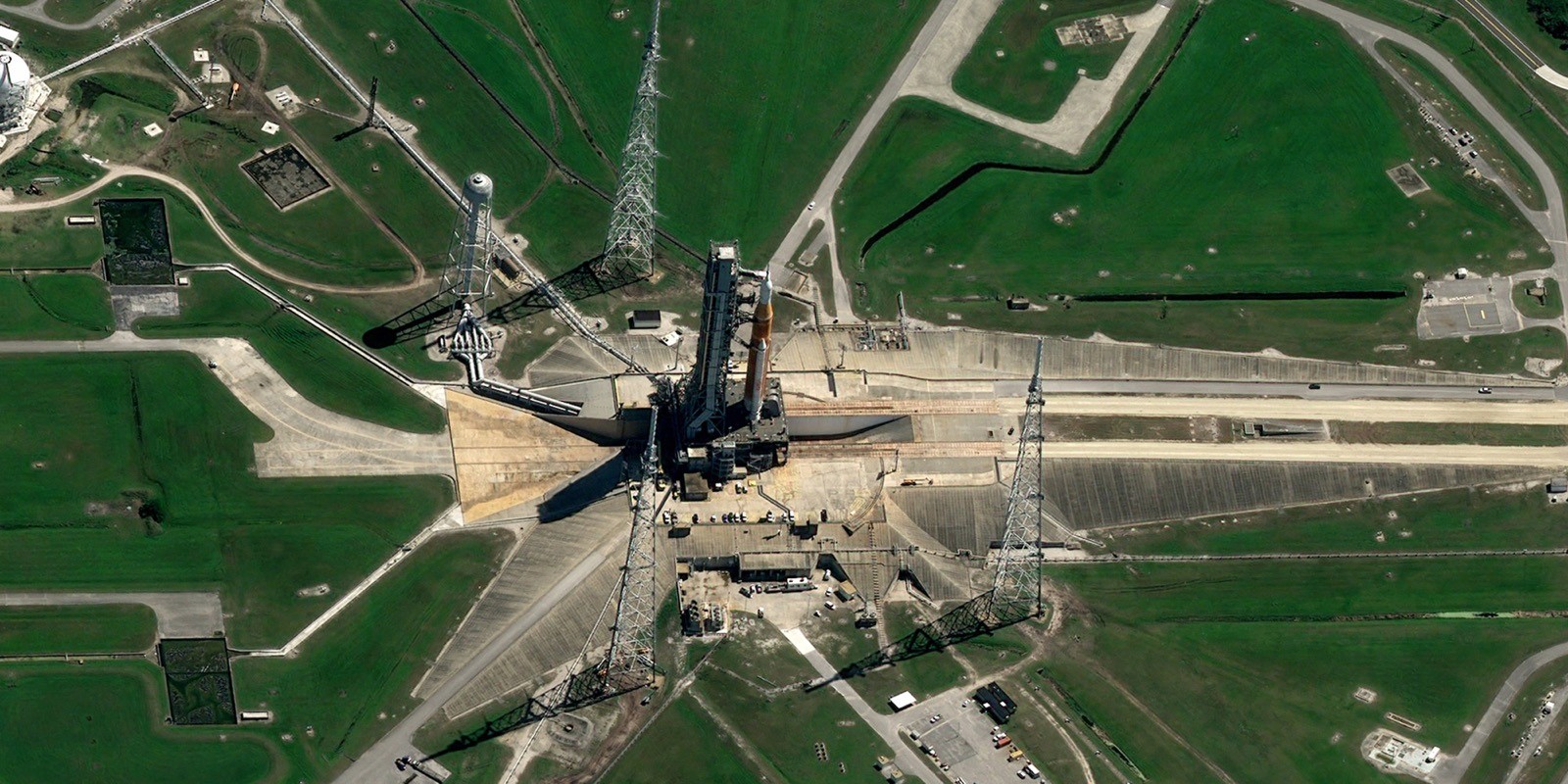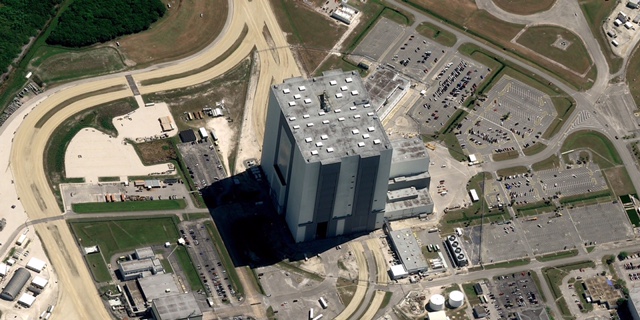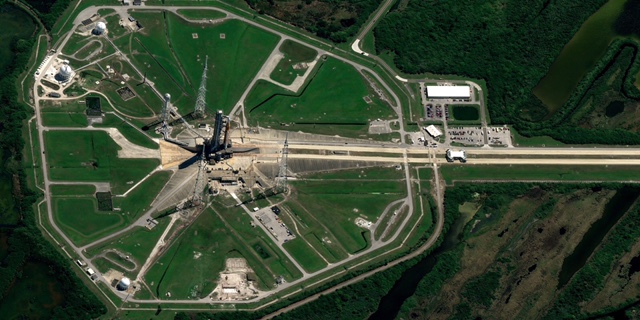NASA's new moon rocket spotted from space rolling to the launch pad (photos)

NASA's moonbound rocket rolled to the launch pad, and satellites orbiting Earth captured the milestone from space.
Excitement is running high NASA rolled its Space Launch System (SLS) megarocket, topped by an Orion spacecraft, out to the launch pad at the agency's Kennedy Space Center (KSC) in Florida on Thursday (March 17) (the rollout extended into the early hours of Friday (March 18) morning). But, while humans on Earth shared countless photos of the rollout, we weren't the only ones watching.
The Pléiades Neo satellite, operated by the European aerospace company Airbus, caught high-resolution images showing the action from space.
Live updates: NASA's latest Artemis 1 moon mission in action
Related: NASA's Artemis 1 moon mission explained in photos




The new satellite images from Airbus show KSC from about 385 miles (620 kilometers) above Earth's surface, with the expansive campus stretching along the Florida coast. The images include a view from space of the Vehicle Assembly Building (VAB) at KSC where SLS and Orion were stacked and assembled and, ultimately, where they left from on their journey to the launch pad.
Zooming in, Pléiades Neo further revealed SLS and Orion at launch pad 39B. As In sharing these photos, an Airbus representative pointed out that the company built the service module component of Orion.
The pair are standing 322 feet (98 meters) tall alongside NASA's mobile launcher, which also rolled out to the pad atop the agency's crawler-transporter 2 vehicle. That machinery, also known as "the crawler," carried the millions of pounds of technology to the pad at just about 0.8 mph (1.3 kph).
Get the Space.com Newsletter
Breaking space news, the latest updates on rocket launches, skywatching events and more!
The rollout that took place on Thursday will allow the team behind NASA's Artemis 1 mission, the first mission in the agency's new moon-landing program, to test SLS and Orion at the pad ahead of launch, which is expected to take place no sooner than May. The Artemis program aims to return humans to the lunar surface for the first time since 1972, the year of the agency's last Apollo moon landing.
Artemis 1 will test Orion and SLS on an uncrewed mission that will venture out about 280,000 miles (450,000 kilometers) from Earth — thousands of miles past the moon — and back.
Email Chelsea Gohd at cgohd@space.com or follow her on Twitter @chelsea_gohd. Follow us on Twitter @Spacedotcom and on Facebook.
Join our Space Forums to keep talking space on the latest missions, night sky and more! And if you have a news tip, correction or comment, let us know at: community@space.com.

Chelsea “Foxanne” Gohd joined Space.com in 2018 and is now a Senior Writer, writing about everything from climate change to planetary science and human spaceflight in both articles and on-camera in videos. With a degree in Public Health and biological sciences, Chelsea has written and worked for institutions including the American Museum of Natural History, Scientific American, Discover Magazine Blog, Astronomy Magazine and Live Science. When not writing, editing or filming something space-y, Chelsea "Foxanne" Gohd is writing music and performing as Foxanne, even launching a song to space in 2021 with Inspiration4. You can follow her on Twitter @chelsea_gohd and @foxannemusic.









